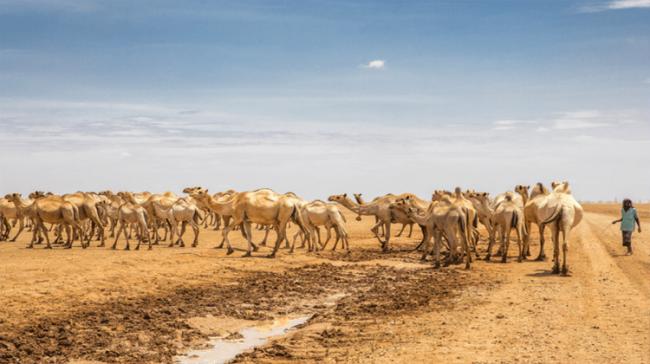Camel Milk, A Panache For Malnutrition In Kenya

Kenya:As day breaks over the sandy stretch of Kenyan desert, Salah Abdinoor Issack finishes his dawn prayers and will now spend the hours until sunrise with his closest companions - his camels.
Issack, his grey beard tinged with orange henna, has herded and cared for camels since the age of seven and feels a deep kinship with the animals that have sustained his rural community in Hadado, northern Kenya.
"I can't fall asleep if I'm not with them," Issack told the Thomson Reuters Foundation.
But the snorting beasts now have an additional benefit. They are being hailed for their ability to withstand climate-related droughts that are set to worsen in the Horn of Africa, where temperatures average above 30 degrees Celsius parts of the year.
Their milk has been dubbed "white gold" by food experts who say the creamy liquid could help conquer malnutrition, diabetes and other medical concerns, making it a tempting new superfood for health-conscious Western consumers.
With a growth in camel milk products available - from chocolate bars to baby milk formula and ice cream to "camelcino" coffees - there is a growing demand from consumers from North America to China, market experts say.
"If there is water scarcity, (camels) can go a month without water. Even when they are thirsty they can still produce milk - there is no downside to camels," said Issack who uses money from milk sales to support his family.
Climate change is a growing threat in Kenya and is making drought and humanitarian disasters worse across Africa, international aid agencies warn.
The number of people in need of food aid in Kenya has risen by almost 70 percent, to 1.1 million, since August 2018, due largely to poor rains, the government said.
In 2017 Kenya declared drought a national disaster and earlier this year announced it had allocated 2 billion shillings (about $20 million) to respond.
Extreme weather has pushed wandering nomads like Issack to bank on camels – and their milk – as a drought-safe investment with Kenya now the world's second largest producer of camel milk after neighbouring Somalia.
"Camels are very well adapted to climate change and they've evolved over millennia to survive in dry, hot climates," said Piers Simpkin, senior programme coordinator at the United Nations' Food and Agriculture Organization (FAO) in Kenya.
"They are a remarkable beast."
Huddled on the roadside at her small store, Halima Sheikh has been selling frothy camel milk for 15 years and is one of a growing number of female milk traders in Wajir County.
As she awaits fresh deliveries of milk sped across the desert on dusty motorbikes, she credits the drink with granting her and many other women an income.
"I don't have anything else. If I didn't have these containers of milk I'd be at home. I'd be starving," she said.
Courtesy: Thomson Reuters Foundation





